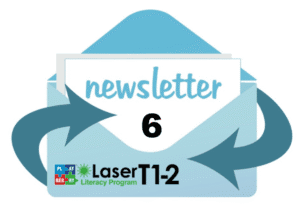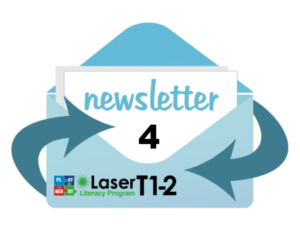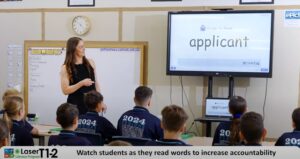
Bill Hansberry
Co-Director Playberry Laser
Linda, Christie, and I have been involved in structured literacy for a long time and have had the privilege of watching some of Australia’s highest-performing schools start from ground zero and build what they have now. We saw the blood, sweat, and tears that went into the design of their scopes and sequences, which were developed in-house.
We saw (and lived ) the hundreds of hours spent developing and refining PowerPoint slides for review and teaching, the agony of writing decodable texts, and mapping previously purchased decodable reader sets to the in-house scope and sequence.
Why did Australia’s pioneering schools build their in-house materials, processes, and assessment systems? Simply because there was no other choice! No ‘off-the-shelf’ program came close to what they knew their students needed. In fact, most of the big-off-the-shelf programs were based on approaches that were counter to the evidence. These programs hurt kids’ literacy development, particularly those who were most likely to experience reading failure due to learning difficulties.
The staff in Australia’s pioneering schools were breaking new ground in a landscape that was still very much in love with whole-language and balanced literacy. The leaders in these schools had to stand their ground against a system that was trying to push them back toward programs and methods that didn’t work.
Driven by (usually) one passionate person with expertise in reading difficulties, teachers and co-educators began to align around the Science of Reading (although we weren’t calling it that back then) and got to work. Their workloads doubled, even tripled, but these folks were driven by the immediate progress that they saw with their students. Nothing fires teachers up more than seeing a change in teaching improve student learning. It’s like a drug; we will walk through fire once we see improvement to ensure it keeps happening.
The process of building in-house curriculum and instructional materials made these teachers, support staff, and leaders experts. They understood the instructional routines they used (because they built them), were trained in direct/explicit instruction methodologies, and undertook intensive training in multisensory literacy instruction through highly reputable trainers. Their own classrooms became the Petri dishes for their evolving practice. These educators got a grounding in the Science of Learning that cannot be beaten.
These folks became the critical mass of the explosion in structured literacy we now see sweeping through Australia. This issue was that it took them 3-5 years to get to where they are now.

Fast-forward fifteen(ish) years. The market is awash with literary programs, some open source, some modestly priced, and some priced extravagantly. These pioneering educators’ hard work and generosity have paid off for all of us. The need for schools to start from scratch and build their curriculum and systems in-house is diminishing; however, there’s no such thing as a free lunch.
When schools choose a literacy program and training suite and ask teachers to teach it with fidelity, teachers usually try their best to do so; however, they do so without the deep knowledge structures that come from having developed the materials themselves and having cut their own path as the fore-runners did.
Fascinated by the program, some teachers go down the Science of Reading / Science of Learning rabbit hole, but many are too exhausted and overwhelmed from the day-to-day of teaching to do so. Early career teachers are often overwhelmed by student behaviour and the knowledge vacuum that their teaching degree left them with, so they want something they can use now and don’t have the bandwidth to think much about the instructional routines that come with it. they’re just surviving. Then there are the teachers who still aren’t convinced of the merits of structured literacy and want to do it their way. Left unchecked, these well-meaning folk make changes that immediately tear the fabric of evidence-informed teaching. Their students quickly fall behind other classes in progress data, and then it’s back to the good scapegoating – blaming the program or, worse, blaming the students.
This sets up a situation where the already highly proficient teachers and their classes benefit the most from the shiny new literacy program, and the less experienced teachers and those convinced that they know better reside over classes who miss out.
The rich get richer, and the poor get poorer.
Principals, this is where you come in. Understandably, you’ve chosen a program like ours to save your teachers the hundreds of yours that come with building structured literacy materials from scratch. You want to free them to focus on teaching, not content creation. That’s a wise shortcut. You’ve potentially shaved years off the road to getting the results the pioneering schools took 3-5 years to see. Clever you!
There’s one thing you can’t shortcut, and there’s no point faffing around the point I’m about to make; I’m going to [say] the stuff and cut the fluff. I’m sure Anita Archer will allow me the creative licence I just took there!
You have to learn to teach the program.
This is what every great Principal in the pioneering schools did.
You won’t get what they got without doing the same. You just won’t.
I know you’re busy running a school; I get it, you’re busy. I bet you’re no busier than your classroom teachers; you bear a broader responsibility. As busy as you are with building projects and other stuff you shouldn’t have to do, you are a pedagogical leader first and foremost. You have to commit to learning the program (whatever program this is) and get yourself into classes to practise teaching it – a few times a week. Scary right? The frightening thing is making mistakes in front of your staff (at best), totally botching the lesson, and even losing the class to scatty behaviour (at worst)! This is the stuff nightmares are made of.
Start by asking teachers if you can watch them for a few lessons, then have a go yourself. And never stop having a go. Arrange with your teachers to jump in if you need rescuing! Heck, come up with a safe word if you need it! Ask for their feedback and accept it graciously, even if you disagree with it. Model to them what you expect when the tables are turned.
Principals, I’ll let you in on a little secret. If you mess it up in your first few teaching attempts, only the most mean and cynical members of your staff will hold you in contempt. The vast majority of your staff will applaud you for your humility and courage. Troops have always revered generals who fight alongside them and despised those who fight wars from the comfort of their offices. If you do this, it will encourage your staff to go to work on their own teaching and change your leadership forever. That is a promise.
Then, and only then, will you have any true credibility with your staff as a teacher. Your stories from your teaching days only get you so far when trying to convince your colleagues that you’re a competent teacher. Get your hands dirty, make some mistakes and prove yourself to be a lifelong learner. You will feel a tectonic shift in people’s attitudes toward you, and you’ll be in a much more authentic position to manage staff performance and give feedback on teaching.
This is what will happen next when you commit to teaching the literacy routine in two or three classes a week. You’ll see, straight away, the variance in how things are done in each room. You’ll see some masterful teaching, and you’ll see some stuff that scares you. Either way, what will stick out is the importance of lowering the variance of what is taught and how it’s taught between classrooms.
You’ll immediately find yourself in conversations with your co-leaders and teachers about what needs to happen to ensure a baseline of agreed practice across classrooms. You will also shed the idea that ‘agreed’ has to be agreed to by all.
If you are using Playberry Laser, you’ll dig out the lesson checklists, demonstration videos, teacher manuals, and even masterclass notes to interrogate what teaching structured literacy looks like (they’re all on the platform—you’ve already paid for them). If you use another program, you’ll do the equivalent.
Watch what you do with staff meetings! You and your staff will want to talk about teaching. 20-minute conversations about the bins will evaporate, and you’ll handle the vast majority of admin via online means like email. You’ll be on the road to having an instructional coaching model in your school where teachers want to be observed and to observe their colleagues. Other checklists, instructional playbooks and observation and feedback schedules will flow from this.
You will remember the day you started this by taking the bold step of teaching in front of your colleagues.
You will have led, and that, my esteemed colleague, is what they pay you the big bucks for!
Leadership is a verb and a noun.
Yell out if you need us to take this first step of teaching in a classroom.
Playberry Laser T1-2 is a teacher-supportive multisensory literacy resource for primary teachers to support their teaching in line with research. We’ve taken the planning and resource design load to free teachers to focus on building content knowledge and sharpening their delivery in line with Rosenshine’s Principles of Instruction.






